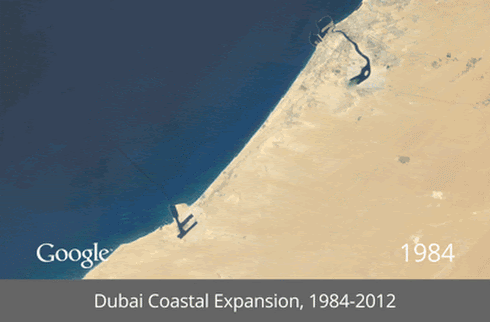
Google has unveiled a new projected dubbed Timelapse that builds on top of its mapping service to help you visualize geographical changes in the Earth over the course of the last 28 years. The project itself comes as the result of a collaboration with NASA and the US Geological Survey (USGS), who have been gathering high resolution satellite images of the Earth for more than 40 years.
With such a massive archive of imagery collected over the years, organizing and cleaning up everything was no easy task, and that’s where Google came in. Using its Google Earth Engine technology, the company sifted through more than 2 million images, which are part of the single longest-running Earth-observing satellite program in existence. Now, through a partnership with Time, they are being presented in timelapse format along with write-ups highlighting several areas of the world for additional context.
Among the locations available for viewing you can find Dubai’s artificial Palm Islands, the melting of Alaska’s Columbia Glacier, and the the deforestation of the Amazon rainforest.



Google says it went through 909 terabytes of data to find the clearest images of Earth taken every year between 1984 and 2012, ending up with a whopping 1.78 terapixel image for each year. Google later worked with CREATE Lab at Carnegie Mellon University to convert them into easily viewable HTML5 animations.
 iTechBahrain Information Technology Digital Marketing Web & Mobile Development Services
iTechBahrain Information Technology Digital Marketing Web & Mobile Development Services


